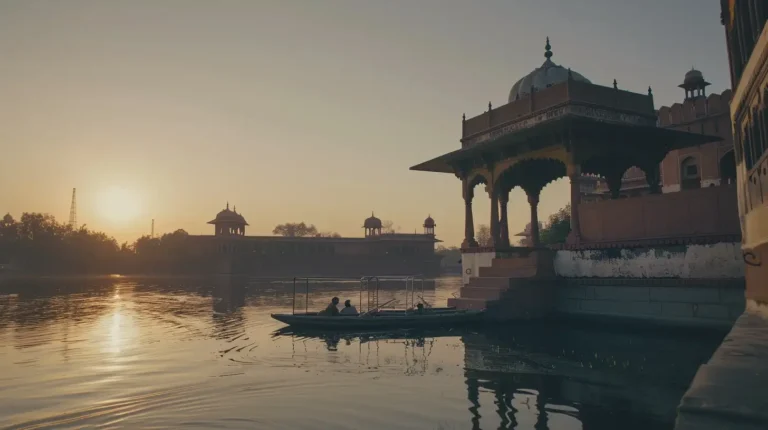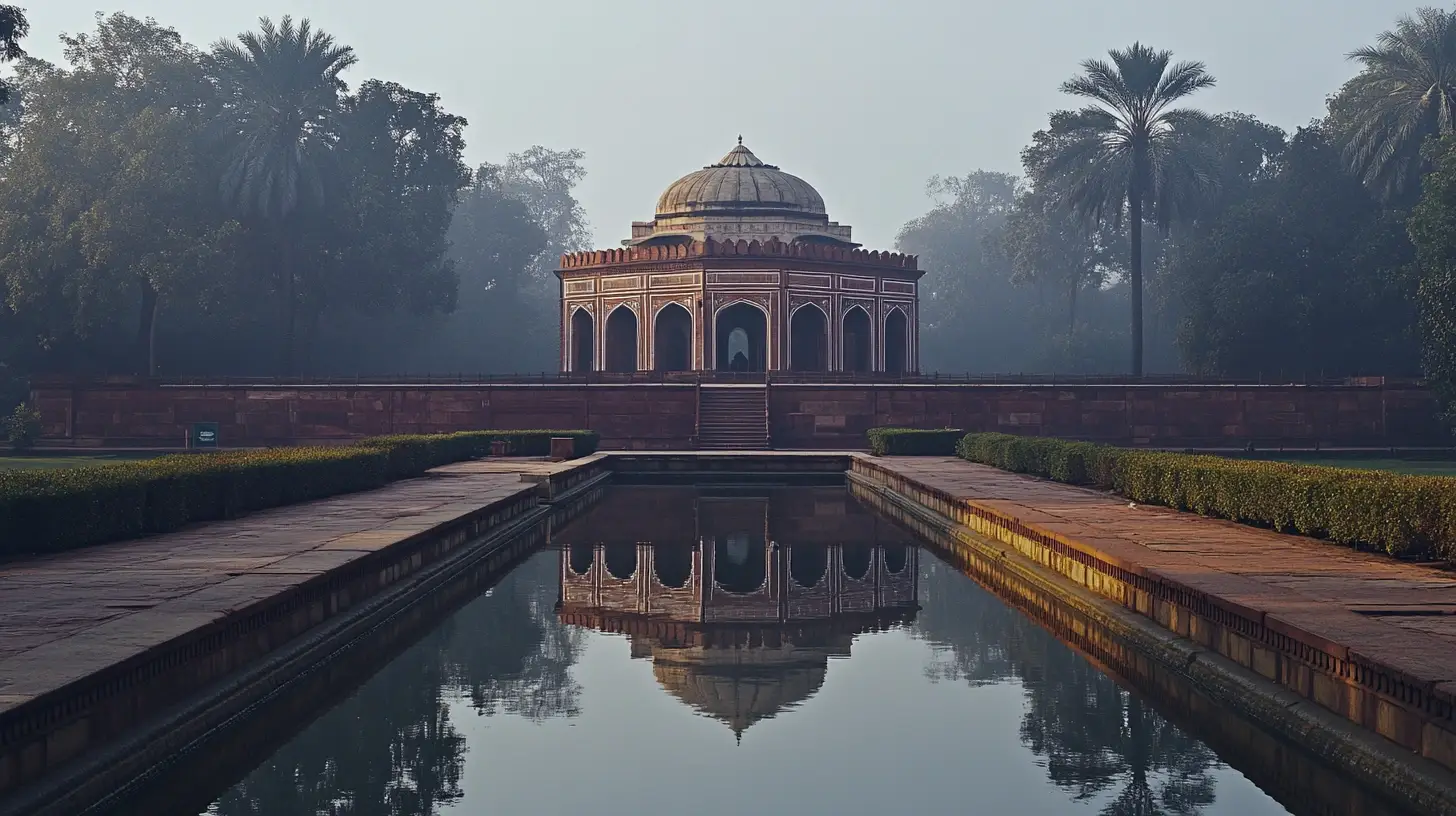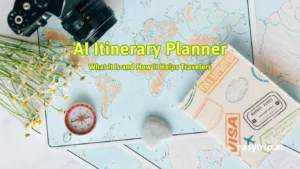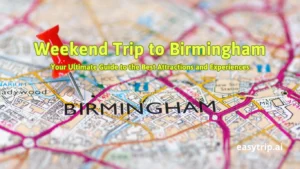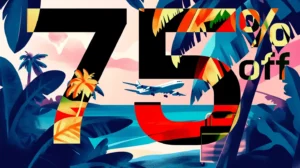Introduction: Planning the Chaos that is India
The idea of traversing the vast and diverse country of India might seem like trying to tame a tiger with a stick of butter—daunting, slippery, and you’re probably not going to make it without some help. With its rich tapestry of cultures, languages, and terrains, planning a trip here requires way more than just a glance at your dog-eared Lonely Planet. This is where trip planning websites come in, swooping in like digital superheroes to turn an overwhelming task into a dream journey.
My journey through India wasn’t just about snapping selfies in front of the Taj Mahal (though I definitely did that) but about understanding how trip planning websites could enhance my experience—from local dos and don’ts to finding that one roadside stall serving mind-blowing pani puri. Here’s how my 18-day trip went down, with a lot of help from the best trip planning tools I could find.
Choosing the Right Trip Planning Website: The Pre-Adventure Struggle
Before setting foot in India, I was more concerned with finding the right trip planner than I was with packing enough socks (spoiler: I didn’t). I sifted through a digital sea of websites, hunting for the ones that could turn my chaotic ideas into a neat, sensible itinerary.
The good ones offered features like customizable itineraries, local experiences, and even tips on the best times to visit the Taj Mahal without feeling like a sardine in a tourist tin. Spoiler alert: the best time is at sunrise—when you can pretend you’re the only person there, for about three precious seconds before the busloads arrive.
Day 1-3: The Historical Wonders of Delhi – “Monuments, Markets, and Mild Panic”
Day One: My journey kicked off in Delhi, and let me tell you, Delhi is an experience that starts with the senses and ends with you falling into bed wondering if you’ll ever regain feeling in your legs. Thanks to my trip planner, I knew exactly how to navigate the Red Fort and Humayun’s Tomb without spending most of the day stuck in lines. It even suggested the best places for chaat (delicious spicy street snacks), and I quickly learned that saying “just one more” is a dangerous lie you tell yourself.
Day Two: My planner made sure I didn’t miss the essential sights, like Qutub Minar, but also introduced me to quieter spots like Lodhi Gardens—a perfect escape from the chaos where I could pretend to be deep and reflective while trying to digest all those snacks. A new update in 2024 includes guided AR tours for some monuments, which showed me how the structures used to look back in their glory days—very educational for someone like me who typically skips museum plaques.
Day Three: No trip to Delhi is complete without visiting Chandni Chowk—a market where personal space is a myth and your senses are overwhelmed in the best way possible. My planner’s best tip? Wear comfortable shoes and have a strong sense of humor. You’ll need both while navigating through the traffic, humans, and enthusiastic salespeople.
Day 4-6: Spiritual Sojourns in Varanasi – “Holy River, Holy Cow, and Holy Moly!”
Day Four: Varanasi was next on my list—India’s spiritual beating heart. My planner knew this wasn’t the kind of place you just wing it. It suggested an early morning boat ride on the Ganges, where the city’s ghats came alive with people performing their rituals. There’s something surreal about floating down the river as the sun rises and the sound of temple bells fills the air. It made me want to hug a stranger—but I didn’t, because boundaries.
Day Five: The planner had another gem for me—the evening Aarti ceremony at Dashashwamedh Ghat. Imagine fire, chanting priests, hundreds of devotees, and curious tourists (me) standing in awe. My trip planner, bless its little algorithmic heart, even gave me etiquette tips: no selfies during the prayers, and keep an eye on your shoes, lest they become someone else’s prized possession.
Day Six: This day was about wandering through the narrow alleys, avoiding the holy cows that believe the city is theirs (they’re right, by the way). My planner found me the best lassi shop in Varanasi, a creamy concoction served in a clay cup that was so good it nearly brought me to tears. Pro tip: Always bring a planner that tells you where to find the food, because life’s too short for bad meals.
Day 7-10: The Regal Heritage of Rajasthan – “Where Everything is Colorful, Including My Poor Blistered Feet”
Day Seven to Ten: Next, I was off to Rajasthan, a state where every city feels like an entirely different world. Jaipur, the Pink City, was my first stop, where my planner made sure I didn’t miss the Hawa Mahal and Amer Fort. A key 2024 tip: To avoid the crowd, book your fort tours through a planner that lets you visit before the general public arrives. Nothing makes you feel more royal than having a palace almost to yourself—except maybe a crown, but I had to settle for my sun hat.
Day Eight: In Jodhpur, the Blue City, my planner directed me to Mehrangarh Fort—a fortress that looks like it was lifted straight out of a medieval fantasy novel. And let me tell you, no gym could have prepared me for the stair climb. Fortunately, there was a quaint café at the top serving spicy masala chai, because in India, there’s always chai.
Day Nine and Ten: Then came Udaipur, the city of lakes, where my planner organized a boat ride on Lake Pichola at sunset. My advice? Get a planner that schedules romantic boat rides even if you’re not feeling particularly romantic—because sunsets over water make everyone’s heart skip a beat, even if it’s just over the beauty of it all.
Day 11-14: Backwaters and Beaches of Kerala – “Floating Along and Forgetting Time Exists”
Day Eleven to Fourteen: After the dust and regal splendor of Rajasthan, I was ready to unwind, and Kerala welcomed me with its lush greenery. My planner booked me on a houseboat for an overnight stay on the backwaters of Alleppey. Imagine drifting slowly along palm-fringed canals with nothing but the sound of water and your own contented sighs. My planner knew the best houseboat operators—because not all boats are created equal (some have questionable bathrooms, and you don’t want to learn that the hard way).
Day Thirteen: I also spent some time in the hill station of Munnar, where the planner suggested a tea plantation tour. I’m convinced that after sipping fresh tea while gazing at endless fields of green, I’m a certified tea snob now. Thanks, India.
Day Fourteen: My Kerala days ended at Kovalam Beach, where I finally put my feet up and took the term “doing nothing” to Olympic levels. The planner found me a nice spot for an Ayurvedic spa, and let me tell you, getting a traditional massage while listening to the waves is something I highly recommend adding to your bucket list.
Day 15-18: The French Flair of Pondicherry and the Ancient City of Madurai – “Bonjour Meets Namaste”
Day Fifteen to Eighteen: Next, my planner guided me down to Pondicherry, a little slice of France in southern India. Picture cobbled streets, French colonial villas, and street signs in Tamil and French. My planner was fantastic at mixing things up—I explored the French Quarter on a bicycle and ended my day at a local café eating crème brûlée with a masala chai twist. Honestly, where else can you mix two worlds like that?
Day Seventeen: The journey wouldn’t be complete without visiting Madurai and its incredible Meenakshi Temple. This was where I realized my planner had true powers—it scheduled a local guide for me, and suddenly, all those ornate carvings made sense. Plus, the planner made sure I knew the appropriate temple attire. Fun fact: in Madurai, modesty isn’t optional unless you want the temple caretakers to wrap you up like a human burrito.
Fun Facts About Traveling in India
- Holy Cows Rule the Streets: Cows in India are like the ultimate VIPs—they go wherever they please. If a cow decides to nap in the middle of the road, everyone waits. Even traffic respects their chill.
- Delhi’s Rickshaw Rides Are Adrenaline Sports: Want to feel alive? Take an auto-rickshaw through Old Delhi. Hold on tight, because this ride is cheaper than therapy and gives you plenty of stories to tell.
- Tea, Anyone? India drinks around 837,000 tons of tea every year. And half of that is probably in the form of chai served on street corners. It’s safe to say that in India, no problem is too big if you have chai.
- No Personal Space: It doesn’t exist. If you love your personal bubble, India will pop it. But there’s something comforting about the hustle, bustle, and closeness—you’re never alone here.
- The Great Indian Nod: Is it a yes? Is it a no? The infamous head bobble can mean anything, and part of the fun is learning to interpret the nuances. My planner even included a “nod guide,” but I still just nodded back and hoped for the best.
Tips & Tricks for Using Trip Planning Websites in India
1. Book Ahead for Popular Attractions
Tourism in India is back in full swing in 2024, and if you’re planning on visiting popular sites like the Taj Mahal or Hawa Mahal, use your trip planner to pre-book tickets. Trust me—nothing kills the romance faster than a three-hour line in the hot sun.
2. Offline Access Is a Must
WiFi in India can be spotty, especially in rural areas. Make sure your planner app has offline capabilities, so you don’t end up trying to navigate using a confusing hand-drawn map from a well-meaning local.
3. Use the Hidden Gems Feature
Good trip planners highlight lesser-known attractions, like the peaceful Bundi in Rajasthan or secret sunset spots in Goa. These are where the real magic happens—away from the crowds, where you can truly breathe in India.
4. Look for Local Insights
Choose planners that offer cultural tips, like when to remove your shoes, what to wear in temples, or how to respectfully photograph people (hint: always ask). These insights make the difference between being a tourist and a traveler.
5. Balance Your Itinerary
India is exciting but can be overwhelming. A good trip planner will make sure you have downtime to relax—whether that’s lounging on a beach or getting pampered in an Ayurvedic spa.
Conclusion: Embracing India with a Trip Planning Website by My Side
Reflecting on my 18-day adventure across India, I realized that the trip planning websites were like having a travel-savvy best friend in my pocket. They kept me organized, helped me find hidden gems, and allowed me to experience the best of what India had to offer without feeling rushed or overwhelmed.
From navigating the bustling markets of Delhi to floating on a houseboat in the backwaters of Kerala, every moment was a testament to how technology, paired with the rich tapestry of India, can create an unforgettable experience. The convenience and cultural depth brought by these trip planning tools took my adventure from “barely surviving” to “thriving”—ensuring I was immersed in the magic, culture, and chaos of India without losing my sanity.
FAQ
1. What Are the Benefits of Using Trip Planning Websites in India?
- Streamlined Itineraries: They handle bookings, local experiences, and even reminders for culturally significant behaviors, making the experience more authentic.
- Local Recommendations: They help find places you wouldn’t discover in mainstream guides—like that back-alley lassi shop in Varanasi that was life-changing.
- Flexibility: Plans change, and trip planning tools often have the option to adjust bookings. If you decide one city isn’t enough, extend your stay with ease.
2. How Do I Choose the Best Trip Planning Website?
- Look for a website that offers extensive destination coverage in India such as easytrip.ai, from bustling cities to small towns.
- Customization Options are key—you want to be able to tailor your trip to match your interests.
- Offline Support: A planner with offline access is crucial for India, where connectivity isn’t always guaranteed.
3. Are Trip Planning Websites Reliable for Solo Travel in India?
- Absolutely! They provide safety tips, highlight trusted hotels and hostels, and ensure you stay in the right neighborhoods. Plus, they take away the fear of getting hopelessly lost.
4. What’s the Best Way to Book Activities in India?
- Pre-book popular sites like the Taj Mahal or Amer Fort—it saves a ton of time. Trip planners can often offer exclusive deals or tickets that are hard to get otherwise.
5. What Should I Avoid Doing in India?
- Avoid public displays of affection—it’s not part of the culture. Don’t drink tap water—stick to bottled. And whatever you do, don’t try to out-haggle a Delhi market vendor unless you’re ready for battle. (Hint: just have fun with it!)
With the right tools, traveling in India can be the journey of a lifetime—where every corner holds a new surprise, a unique story, or an experience that you’ll carry with you forever. So, get that trip planner, grab your chaat, and get ready to fall head over heels for everything this colorful, chaotic, beautiful country has to offer!

